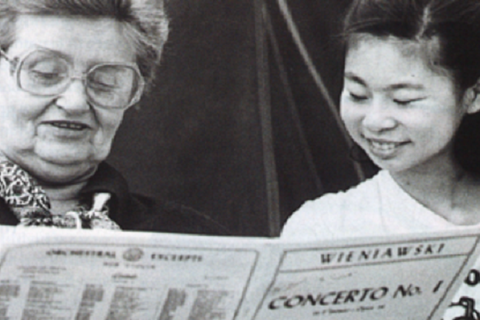The Strad's panel of experts answer string teaching questions from readers as part of our Teacher Talk series

How do you determine what repertoire is best for a student? Erika Burns, Seattle, US
Bruno Giuranna: At a certain point in their studies, students should be brought to understand, hear and feel what it means to ‘play really well’. This is not at all obvious or easy, and the process can take time. It’s possible first on a simple piece or study, or perhaps an easy group of notes. After that, the teacher should increase the level of difficulty of the student’s repertoire, always maintaining that quality. This should be done gradually, with great tact, and without the fear of switching back to undemanding works if the desired level is lost.
Boris Kuschnir: It is important to establish the purpose for which repertoire is being allocated. In the case of preparation for a competition, a solo performance with orchestra or a recital, repertoire should be chosen to be of maximum interest and effect for the audience in question, and should play to the student’s strengths. If the aim is to develop specific aspects of the student’s playing, the teacher should select the repertoire with the same precision as a good doctor prescribing medicine for a patient. The correct choice of repertoire is essential for the technical development of a violinist, and even more so in helping them become a fully rounded musician.
Jeff Bradetich: Establish a list of repertoire that teaches music and technique at various different levels. When the student reaches a particular level give them three choices to listen to. The one that most excites them is the right choice. The truth of the matter is that the student will learn most thoroughly and quickly when they are most engaged, despite our best efforts to teach them ‘what they need to know’. It is not healthy always to dictate what the student should work on. It is more important to develop their ability to think for themselves and to explore what the world has to offer.
Mimi Zweig: There are sequences of repertoire that can be presented to students to facilitate musical and technical growth. I find that if I set the groundwork at each level, reviewing and incorporating the tasks of the previous levels, students are able to absorb new repertoire easily. I have my students prepare pieces at three levels concurrently. The first is below the student’s level, as in a review piece which when performed will be well done and keep the confidence level high. The second is at the student’s level, where learning the new piece allows the student to feel good because the challenges are attainable. The third is above the student’s level, in order to keep the student on their toes (ego intact) and make sure they know that there are always new tasks to be mastered.
Bonnie Hampton: The music needs to be of good quality, but it is important not to jump into great masterpieces until a student is ready. For example, the notes of the Brahms E minor Sonata are not so hard, but to hear a young student playing it before they are ready instrumentally and can experience the emotional impact of the music is robbing them of the joyful musical discovery when they are ready. Of course, we were all anxious to play those wonderful works, but they need to be respected and the right earnt.
THE EXPERTS:
Jeff Bradetich is professor of double bass at the University of North Texas College of Music
Bruno Giuranna teaches viola at the Fondazione Stauffer in Cremona, the Conservatorio della Svizzera Italiana in Lugano and the University of Limerick in Ireland
Bonnie Hampton was formerly on the faculty at the Juilliard School, teaching cello in both the college and pre-college divisions
Boris Kuschnir is violin professor at the Vienna Conservatoire and at the University of Music in Graz
Mimi Zweig is professor of violin and viola and director of Pre-College Strings at Jacobs School of Music, Indiana University at Bloomington








































No comments yet